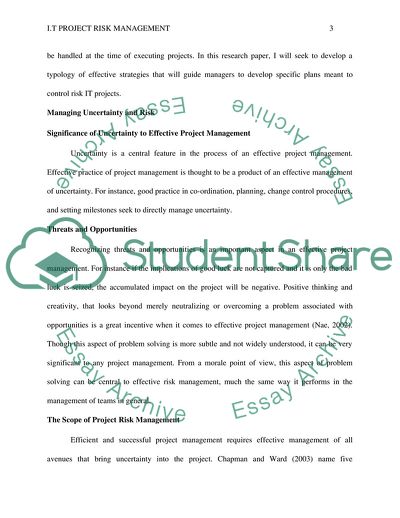Cite this document
(IT Project Risk Management Research Paper Example | Topics and Well Written Essays - 3750 words - 1, n.d.)
IT Project Risk Management Research Paper Example | Topics and Well Written Essays - 3750 words - 1. https://studentshare.org/information-technology/1877890-it-project-risk-management
IT Project Risk Management Research Paper Example | Topics and Well Written Essays - 3750 words - 1. https://studentshare.org/information-technology/1877890-it-project-risk-management
(IT Project Risk Management Research Paper Example | Topics and Well Written Essays - 3750 Words - 1)
IT Project Risk Management Research Paper Example | Topics and Well Written Essays - 3750 Words - 1. https://studentshare.org/information-technology/1877890-it-project-risk-management.
IT Project Risk Management Research Paper Example | Topics and Well Written Essays - 3750 Words - 1. https://studentshare.org/information-technology/1877890-it-project-risk-management.
“IT Project Risk Management Research Paper Example | Topics and Well Written Essays - 3750 Words - 1”. https://studentshare.org/information-technology/1877890-it-project-risk-management.


